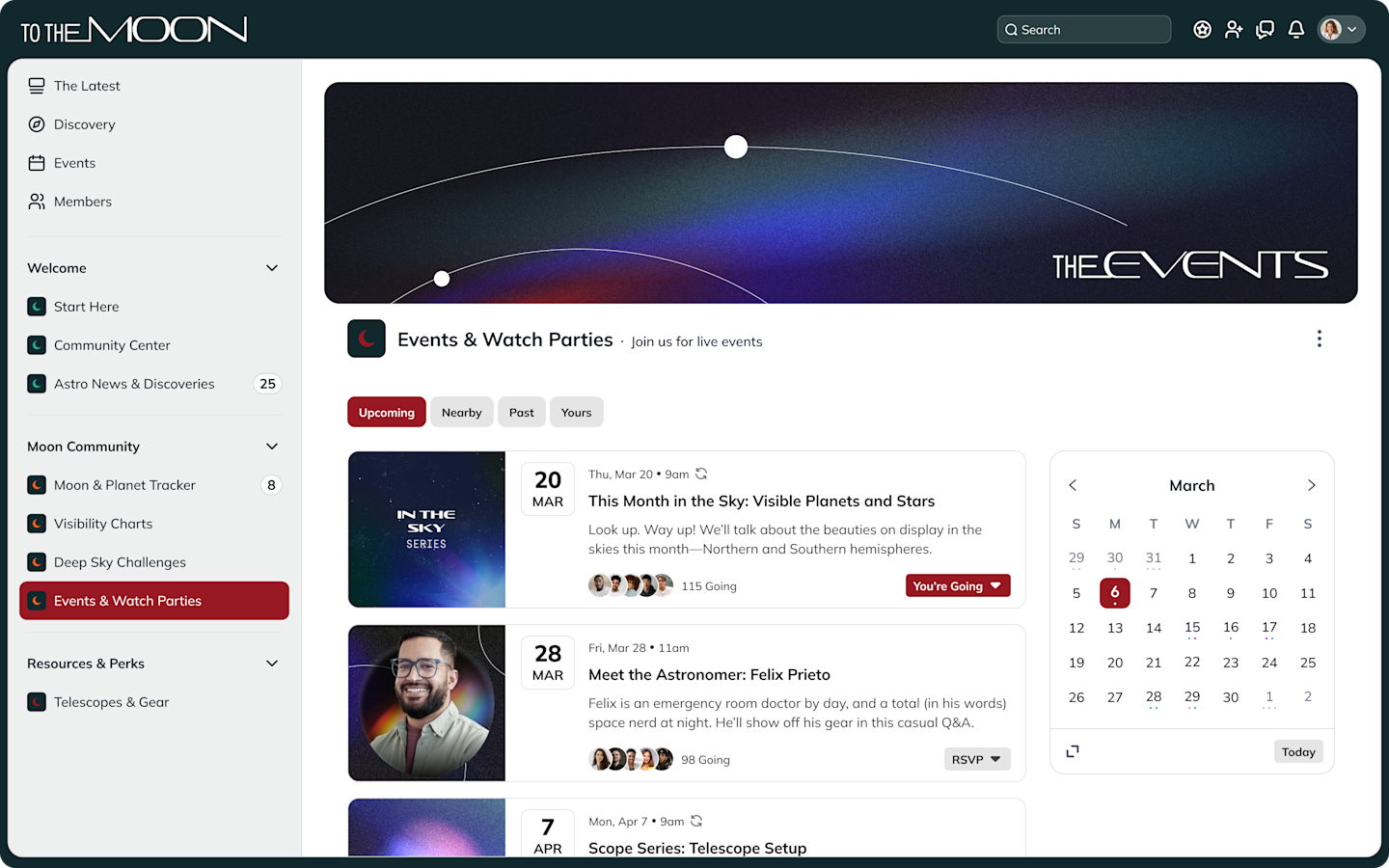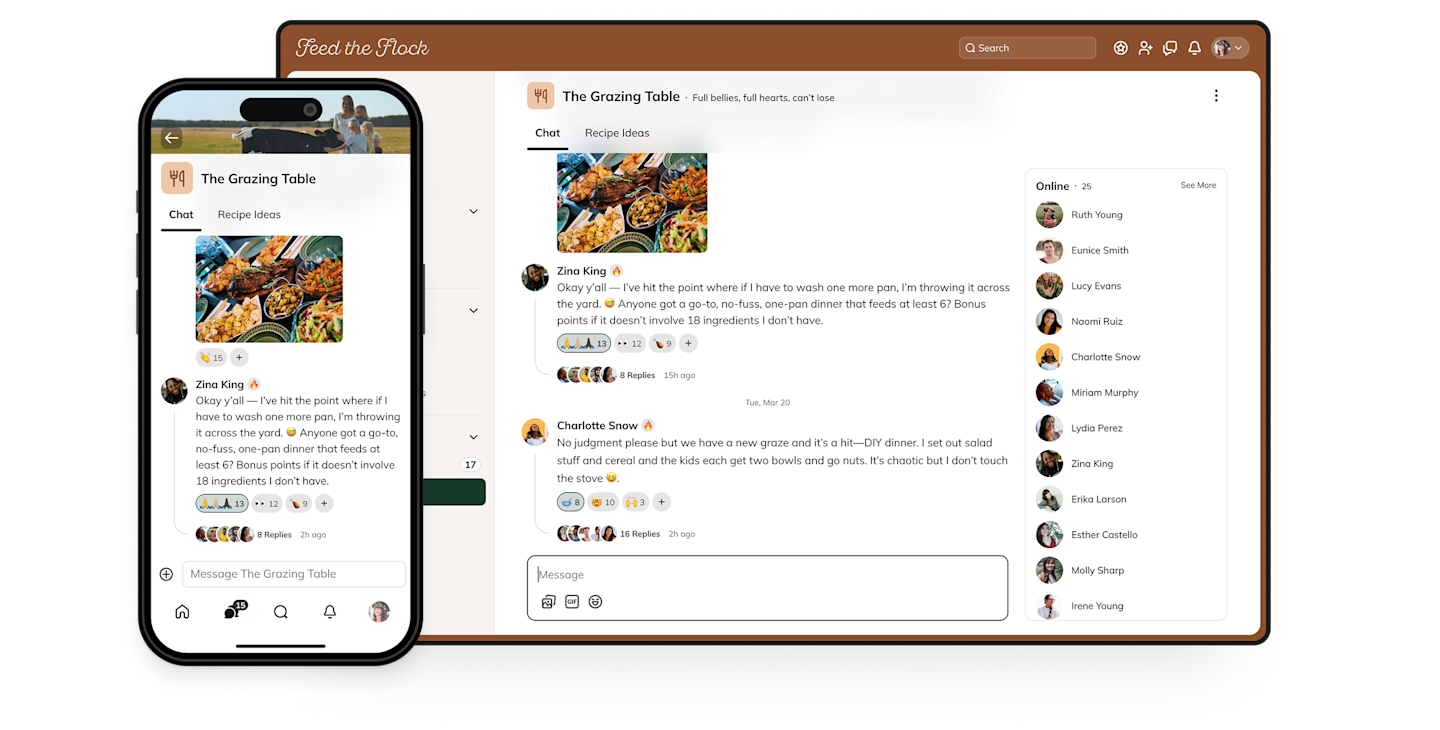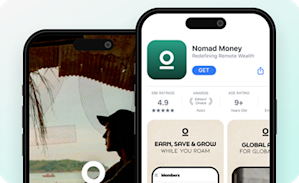Communities & Memberships
How to Price a Membership Site in 2025
If you’re starting a membership site but not clear on what to charge, here’s what we’ve learned from 12,000 Mighty Networks.
Author
Last Updated
July 31, 2025

Creating a membership site around a community business model gives you a business you can scale like nothing else in the creator economy.
And there are hundreds of great membership site ideas that can become thriving communities.
The hardest part of starting a membership site is often knowing what to charge. In this article, we'll cover:
Some key facts about membership businesses (with numbers).
The average membership site price for different use cases.
Different membership pricing models.
Questions to consider when choosing a pricing model.
We'll share data from our survey of 12,000 membership sites on our platform and others.
Try the platform with the most $1 million communities.Start Your Free Trial
How to price a membership site
What our data shows
The average membership fee on a membership site on Mighty is $48/mo.
We'll get into some of the different numbers below, but that's the baseline.
However, when you think about membership site pricing, there are different parts to your business model.
Do you prefer recurring business income or one-time pricing?
Is the membership fee the only thing people will pay, or will your community include upsells?
Is the community the focus, or is it to support another digital business like a brand or newsletter?
The research shows that brands and creators make money in a lot of different ways. For example, here are some of the common ones:

So as you think holistically about membership fees, here are some things to consider.
What our data shows...
Paid plans sell
Starting a paid membership site can be intimidating, but it doesn't have to be. Our data shows that, when membership sites offer paid plans, they are able to sell paid plans.
77% of Mighty Networks that have the option for payment are making ongoing sales. And 82% of paywalled membership communities have made a membership sale in the past 90 days.
Upsells work
Paid membership sites also sell above and beyond a membership fee. And paid membership sites actually have a higher upsell rate than free ones.
90% of paywalled networks are making sales on top of the membership fee: things like courses, coaching, and events.
On the other hand, 75% of freemium networks are selling additional courses, events, and coaching.
It might be counterintuitive, but it proves that paying members are happy to pay for valuable upgrades too.

You don’t need millions of members
A lot of our Mighty Networks are selling memberships to their communities without enormous followings.
Membership businesses are lucrative enough that even "small" communities can become valuable businesses.
With a baseline membership fee of $48/mo, that means:
100 members = $4,800/mo revenue
1,000 members = $48,000/mo revenue
10,000 members = $480,000/mo revenue
These numbers are real--we see these all the time. And it shows why membership businesses are incredible.
At $48/member, each member is worth at least $576/year to your community. And that's not counting for any upsells or additional revenue.
You can use our creators calculator to compare revenue for membership sites to other common ways of content monetization.
Growth is organic
Within a Mighty Network, the Host can choose to let members invite others into the community. In a paid community, this organic growth with people inviting their friends is twice the rate it is in a free community.
Paid membership drives engagement
The old adage is that people value what they pay for, and this is true of memberships as well. We see a higher level of engagement with our paid membership communities.
And you don’t need to post 100x a week to make it happen. The most successful Hosts on Mighty Networks only need to post 2-4 times a week to keep their communities thriving.

The average price of a membership site
The average price of a Mighty Network is $48/mo. We've seen that number rise from about $39 in 2022-23.
This number is in line with other industry reports, for example; Membership Geeks reports a range of $25-49 for all communities (2022 data).
But there are a range of prices for membership sites, including high-ticket memberships of over $1,000. The top-earning memberships on branded apps are charging an average of $125/mo.
Membership site pricing strategies
There are a few different strategies for pricing and marketing a membership site. None of these is wrong, nor are they mutually exclusive. Some can be combined.
But we should say, you should almost never price anything according to what it costs you to make--either in time or money.
For example, you would never say, "It took me 20 hours to build a course. If I sell it to 10 people for $20 each, I've made $10/hr.
This is an extreme example, but people pricing something for the first time often use this kind of logic--especially if this is a first business endeavor.
Here are some better approaches:
1. Value-based pricing: Price your membership site according to what it's worth to members. For example, a community that will help business owners generate an extra $100k/year in value is worth a lot to them. Charge enough to reflect that. 2. Tiered pricing: Having different membership levels for people who can afford different things. This has the benefit of letting people "self-serve" the pricing and features that best fit them. 3. Freemium: Giving away a membership for free and charging for upgrades can be a way to handle a free trial. 4. Time-based pricing: Having a plan that lets members choose either monthly or yearly access is a common pricing strategy (often with a discount for a longer commitment). 5. Volume-based pricing: This is a unique example, but where a membership site deals with consumable digital goods, volume can work. For example, a paid stock photo site might let you have limited downloads each month, depending on your plan. 6. Referral programs: Including a referral discount in your pricing can be a good way to incentivize growth.

Pricing questions to consider
If you're still stick on pricing, here are a few final questions to consider:
What will it take for members to care?
As we said above, one of the things we see again and again is that people value what they pay for. This means that, while it may be counter-intuitive, communities that charge something are often healthier and have higher member engagement.
If your membership provides help for job-seekers, $20/mo might be reasonable. If your membership provides help for CEOs, $20/mo would be a joke. No well-paid CEO is going to take something seriously that costs $20/mo.
Pricing should be proportional to what it will take for members to care.
What are your members' alternatives?
What ELSE would your members have to pay for to get the results they'll get from being in your community? If you have a fitness community that helps people achieve their health goals, consider what they'd have to pay for to reach those goals otherwise. A personal trainer? A gym membership?
Consider what they would have to pay for the results if it weren't for your community. And price accordingly.
What income targets do you have?
One of the other considerations that may impact your pricing model for your membership site is your income target. Let’s say you wanted to make $4,000/mo in order to quit your day job, you could use this number to work backward and set revenue goals.
So for example, if you were pretty confident you could find 100 people to join your community, you could charge $40. If you wanted to make $4,000/mo as a group coach, you might decide you don't want a community of 100 people. In this case, you could work backward based on your capacity. If you knew that you could run 6 group coaching programs a month with 8 people in each, your membership fee becomes a mathematical equation: 4,000 ÷ (6 x 8) = $83.33/mo.
Will you charge one-time or recurring fees?
Most of what we’ve shared above is based on a model of recurring monthly membership fees. But there may be instances where it makes more sense to charge a one-time fee.
For example, if you have a high-value course that people can do in two weeks that comes with your membership, you might consider that some people may choose to take the course and then leave. This could be a case where something like a one-time fee that includes 6 months of free membership makes more sense.
How much churn do you have?
New sites won’t know this number yet, but once you’ve been up for a while you can get a sense of what your membership churn is– e.g. how long members stay on average and how many leave every month. You can use this to inform your pricing strategy to achieve a targeted value per member.
Churn is normal. Every membership site experiences it. But do your best to keep it as low as you can, and after that build it into your revenue model.
Try Our Community Name Generator
Our AI engine is here to help you create a community name that feels like magic. Just share a few words about who your community is for and we’ll get to work.
Examples: coaching clients, meditation novices, vegan chefs, dog lovers, aspiring entrepreneurs, etc.
The names generated by Mighty Co-Host™ are examples only and may be used by other businesses or subject to third-party rights. For more information, check our Terms
Can it scale?
Not every membership site is created equal. Some can scale endlessly, and we have communities with tens of thousands of people in them. These huge communities give creators a lot of latitude to offer membership for less since they’re recouping costs based on scale.
But if you were running a community that’s limited in scale, say a group coaching or mastermind group where you will be limited in members you can serve, you probably need to charge more.

What else are you selling?
The pricing of a membership site isn’t taken on its own. You should consider it as a whole part of your monetization model. If you offer upsells, like courses or premium group access, you may want to keep the cost of membership low, recognizing that it’s easier to upsell to people already in your community than to try to sell products outside.
If you sell a physical product that your membership site supports, you might choose to offer a customer community for free or for a small fee to help people use the product. Figure out how any membership revenue fits within your existing and planned revenue streams.
How much do you need to keep going?
It’s so easy to get excited about the possibilities with monthly recurring revenue. Since the internet is full of stories of people earning tons of money while doing very little, it’s easy to think your community will be your road to riches.
And we hope it is!
But, if you don’t get tons of people signing up the first month, what do you need to keep going?
If you’re going to put work into a community every month, what’s your baseline of income you’d need for that time?
As an example, let’s say you’re confident you could get 15 members (or maybe you can even presell 15 memberships). Even if you only had those 15 members for the next year, how much would you have to charge them to make the community worth your while?

Conclusion
As you’ve seen above, there��’s no one answer for how to price your membership site. The best you can do is take these things into account and create a price that makes sense for you in line with the value your members will get from it.
And if you’re looking for a place to build an amazing membership community, that lets you sell courses, host discussions, live stream, and reach your members through an app, come try Mighty for free! Our awesome software lets you bring together courses, community, content, and commerce in one place!
Ready to launch your membership site?
Ready to start building your community?
Start a free 14-day trial to explore Mighty—no credit card required.
More like this
Join Mighty Community
Learn the principles of Community Design™ (and see them in action) alongside thousands of creators and entrepreneurs. It's free to join!

Online Courses
Creating a Course
Teaching a Course
Course Platforms
Selling a Course
Communities & Memberships
Community Platforms
Managing a Community
Building a Community
Growing a Community
Monetizing a Community
Content Creation
Creators & Entrepreneurs
Monetization
Content Creation
Starting a Business
Website Builders
Creating & Managing a Website
Events
Event Platforms
Hosting & Marketing Events
Branded Apps
Creating a Mobile App
Coaching Apps
Community Apps
Coaching
Mastermind Groups
Starting a Coaching Business
Coaching Platforms
Filter by Category
Online Courses
Communities & Memberships
Creators & Entrepreneurs
Events
Branded Apps
Coaching
Build a $1 Million Community
This free masterclass went viral—sign up to learn why.

























